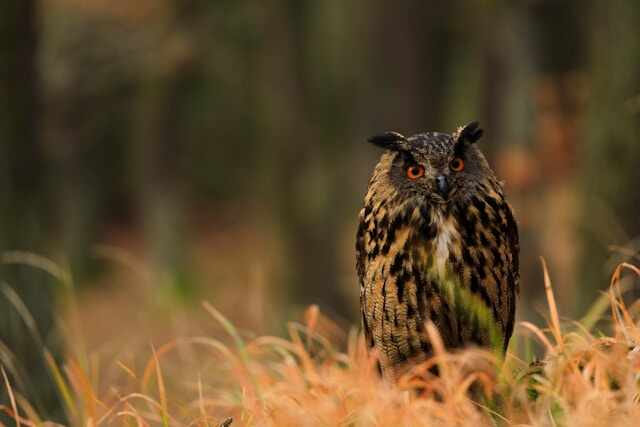Types of Owls In New York
New York, often associated with towering skyscrapers and bustling streets, is also home to a diverse range of wildlife, including several species of owls. These nocturnal raptors, with their distinctive calls and mesmerizing eyes, have captivated the hearts of bird watchers for decades. In this blog post, we’ll delve into the different types of owls that grace our city, each with its unique characteristics and behaviors.
Types of Owls in New York
1. Great Horned Owl
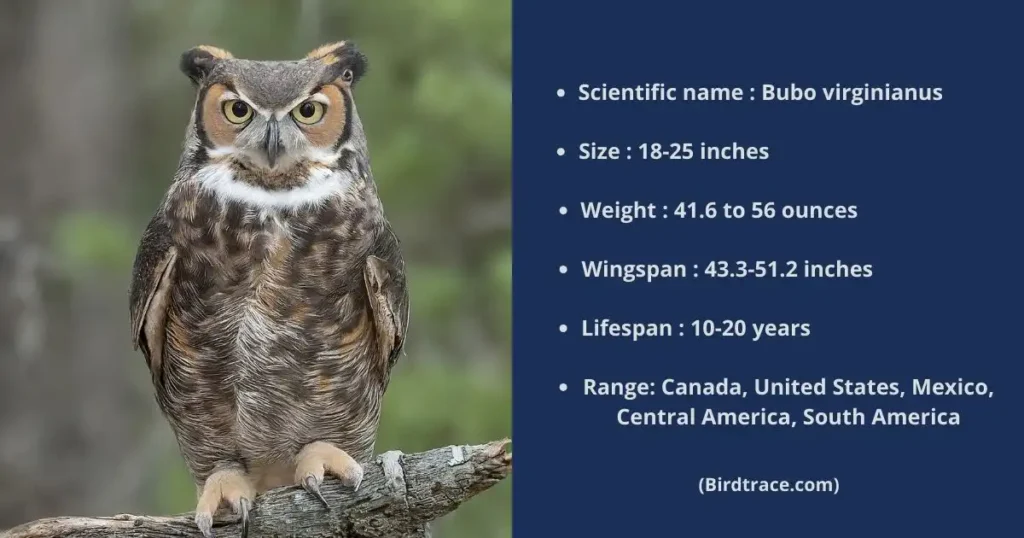
The Great Horned Owl is one of the most recognizable owl species in New York. With its large, ear-like tufts and piercing yellow eyes, this owl is a sight to behold. Its name comes from the tufts of feathers that look like horns or ears on top of its head. The Great Horned Owl is a versatile predator, known for its diverse diet.
From small rodents to larger prey like rabbits and geese, there’s hardly a creature in New York’s wildlife that doesn’t fall under its hunting radar. This owl’s adaptability extends to its habitat as well. You can find them in forests, deserts, and even in the parks of New York City. Their hoot, a deep and rhythmic “hoo-hoo hooooo hoo-hoo,” is a familiar sound in the stillness of the night.
2. Eastern Screech Owl

The Eastern Screech Owl is a small, yet captivating species found in New York. Despite its name, this owl doesn’t actually screech. Its call is more of a soft, melodious trill or a haunting whinny. Eastern Screech Owls come in two colors, gray and rufous, with intricate patterns that help them blend into the bark of trees. They are masters of disguise.
Next time you’re in a New York park, look closely. What you think is a tree knot might just be one of these owls! These owls are cavity nesters and are often found in tree holes or even in nest boxes put up by local bird enthusiasts. They feed on a variety of prey, including insects, small rodents, and occasionally, small birds.
3. Northern Saw-whet Owl
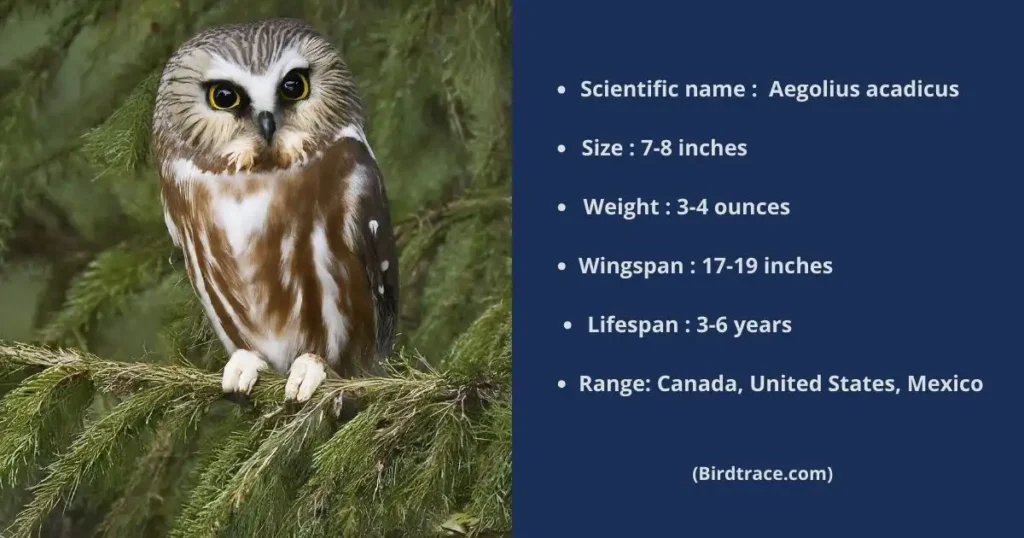
The Northern Saw-whet Owl is one of New York’s smallest owls, about the size of a robin. Named for its call, which sounds similar to a saw being sharpened, the Northern Saw-whet Owl is a hidden gem of New York’s wildlife. These owls prefer dense forests and are often found near water bodies.
They’re elusive and can be challenging to spot. Despite their small size, Northern Saw-whet Owls are skilled hunters, primarily preying on small rodents. Their big, round, yellow eyes and white facial feathers create a distinctive and endearing look.
4. Barred Owl
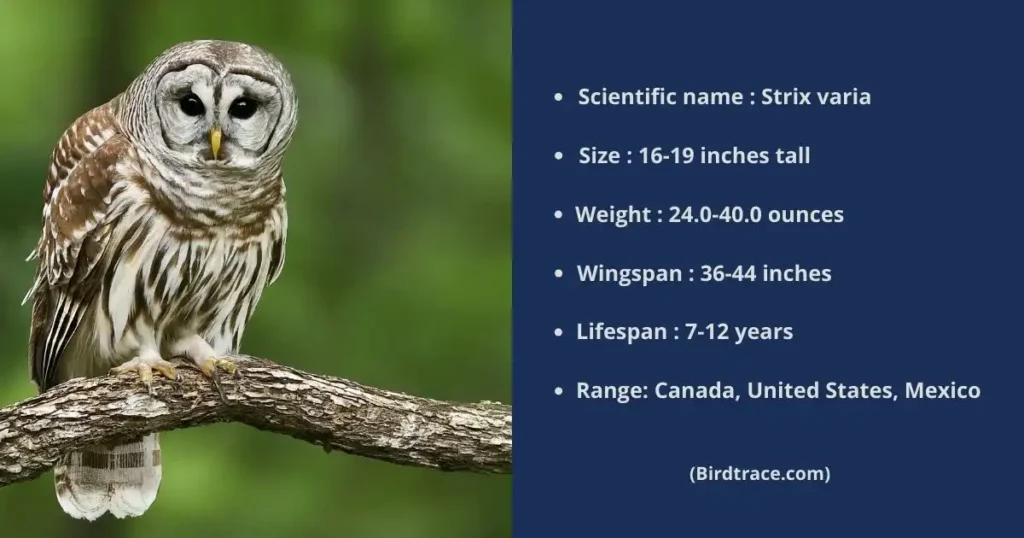
The Barred Owl, with its soulful brown eyes and distinctive “Who cooks for you?” call, is a beloved member of New York’s owl community. Unlike many owl species, the Barred Owl has dark eyes, setting it apart from its yellow-eyed counterparts. Its name comes from the horizontal ‘bars’ on its chest, a unique pattern that adds to its charm.
Barred Owls are known for their affinity for mature forests, where they nest in tree cavities. However, they’ve also adapted to suburban areas, making them a common sight in New York’s parks and green spaces. Their diet is varied, including small mammals, birds, amphibians, and even invertebrates.
5. Snowy Owl
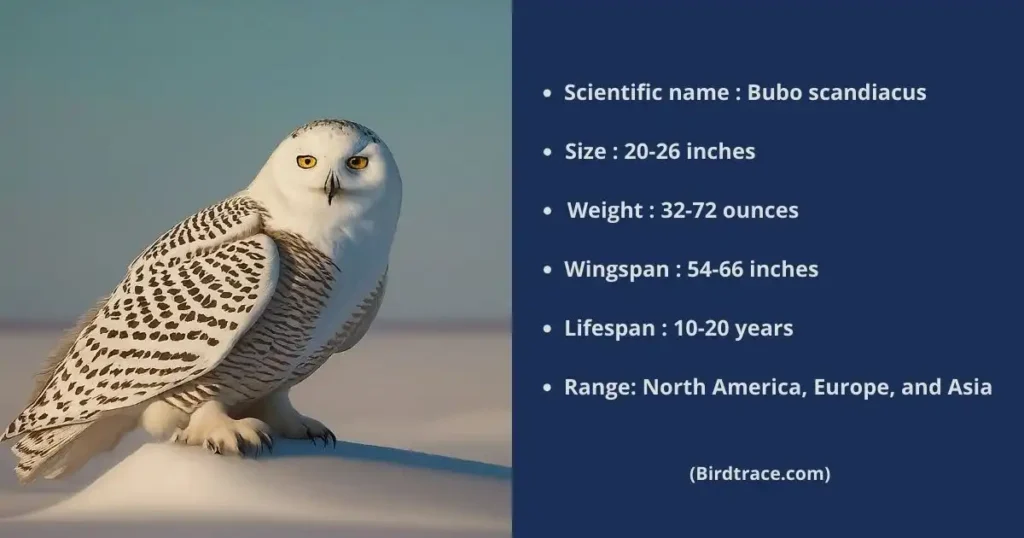
This Arctic visitor is not a year-round resident but graces us with its presence during the winter months. With its stunning white plumage and striking yellow eyes, the Snowy Owl is a sight to behold against the snowy backdrop of a New York winter. Snowy Owls are unique in that they are diurnal, meaning they are active during the day.
They are known for their ground-nesting habits and their preference for open spaces, like New York’s beaches and airports. Their diet primarily consists of lemmings, but in the absence of their preferred prey, they will hunt other small mammals and birds.
6. Short-eared Owl
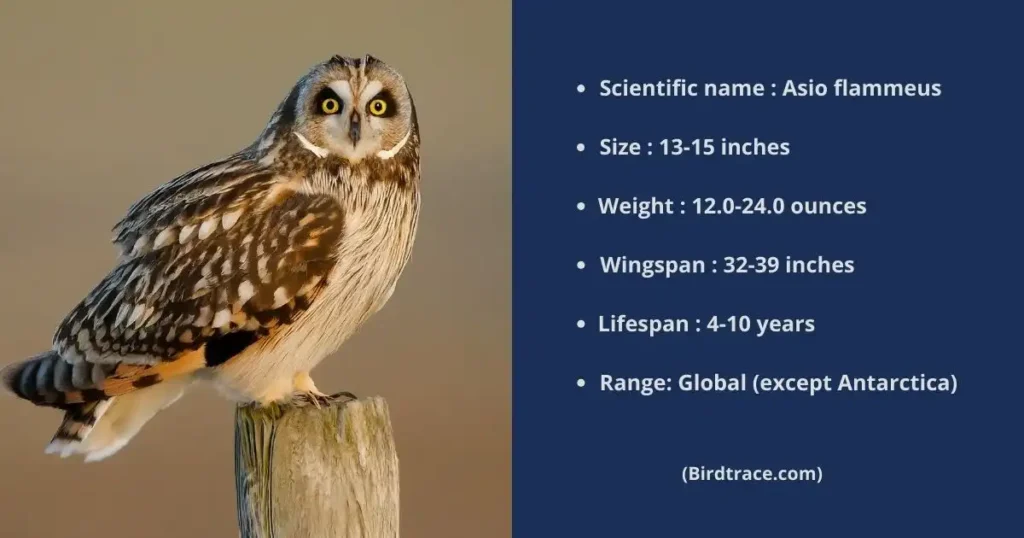
The Short-eared Owl is a medium-sized owl with a widespread distribution, and New York is part of its extensive range. Named for its short feather tufts that resemble ears, this owl is known for its ground-dwelling habits and preference for open habitats like grasslands and marshes.
Short-eared Owls are one of the few owl species that are active during the day, especially at dawn and dusk. This makes them more visible than their nocturnal counterparts. They have a buoyant, moth-like flight, which is a joy to watch as they hunt for voles and other small mammals.
7. Long-eared Owl
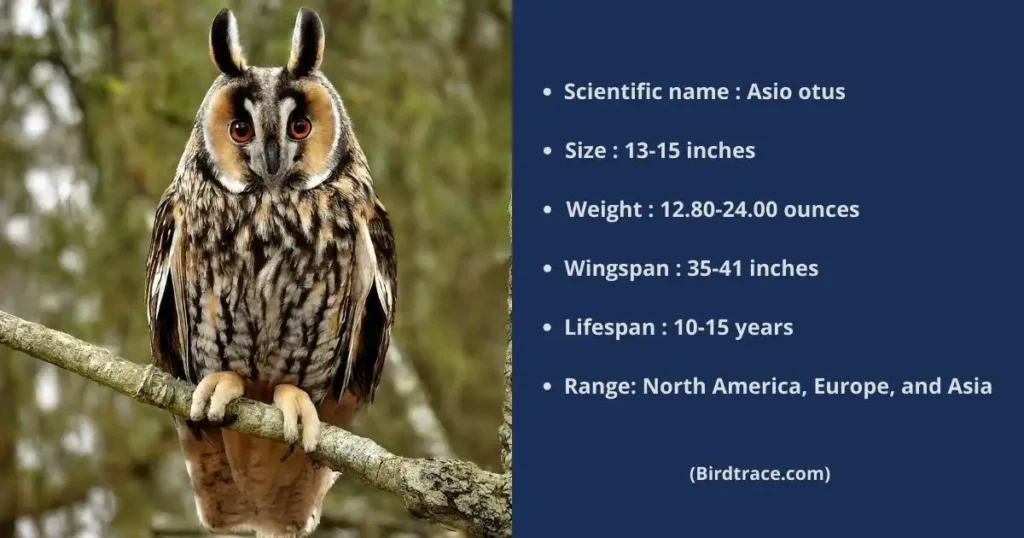
The Long-eared Owl, a medium-sized owl, is a secretive resident of New York’s forests. With its long, ear-like tufts and orange facial disk, this owl has a distinctive appearance that sets it apart. The ‘ears’ are actually feather tufts, and they play a role in the owl’s communication and camouflage.
Long-eared Owls are primarily found in dense forests where they roost during the day, often in the company of other Long-eared Owls. They are nocturnal hunters, preying on small mammals like mice and voles. Their flight is silent, making them efficient and stealthy predators.
8. Great Gray Owl

The Great Gray Owl is a rare sight in New York, but every sighting is a memorable event. As the largest owl by length in North America, the Great Gray Owl is an impressive sight with its large rounded head, no ear tufts, and a yellow-eyed stare. Its ‘great’ size, however, is somewhat an illusion as these birds have extremely fluffy feathers.
Great Gray Owls prefer dense coniferous forests, often near open meadows or bogs. They are known for their distinctive hunting style, plunging into the snow to catch small mammals moving beneath. Their acute hearing allows them to detect prey even under two feet of snow!
9. Boreal Owl

The Boreal Owl, also known as Tengmalm’s Owl, is a small owl species that occasionally visits the northern parts of New York. This owl is named after the Boreal forest, its preferred habitat. With its yellow eyes and white-spotted head, the Boreal Owl is a charming sight. Boreal Owls are cavity nesters, often taking over old woodpecker holes.
They primarily feed on small mammals, especially voles. Their presence in New York is often associated with irruptions, events where they appear in areas south of their usual range in search of food. These owls are elusive and nocturnal, making them a challenge to spot. However, their distinctive call, a series of soft, low hoots, can guide those patient and lucky enough to find them.
Popular Owl Spotting Locations In New York
Central Park, New York City
Central Park, the green heart of New York City, is a popular spot for owl sightings. The park’s diverse habitats attract a variety of owl species, including the Great Horned Owl and the Eastern Screech Owl. The Ramble, a wooded area in the park, is particularly known for its birdlife.
Prospect Park, Brooklyn
Prospect Park in Brooklyn is another urban oasis for owl enthusiasts. The park’s vast wooded areas and water bodies provide ideal habitats for owls. Nighttime guided walks often yield sightings of the Eastern Screech Owl and the Great Horned Owl. The park’s Audubon Center is a great resource for birdwatchers, offering maps and birding tips.
Pelham Bay Park, Bronx
Pelham Bay Park, the largest park in New York City, is a haven for a variety of owl species. Its extensive forests and meadows attract owls like the Barred Owl and the Great Horned Owl. The park’s Kazimiroff Nature Trail is a particularly good spot for birdwatching, offering a peaceful retreat from the city’s noise.
Jamaica Bay Wildlife Refuge, Queens
Jamaica Bay Wildlife Refuge in Queens is a birdwatcher’s paradise. Its diverse habitats, including salt marshes and woods, attract a variety of bird species. Owls like the Short-eared Owl and the Barn Owl have been spotted here. The refuge’s West Pond Trail is a popular spot for birdwatching, offering stunning views of the bay and its birdlife.
Forest Park, Queens
Forest Park in Queens, known for its “knob and kettle” terrain, is a great spot for owl spotting. The park’s mature oak forests are a favorite haunt for the Great Horned Owl. The park’s bird feeders also attract a variety of bird species, making it a popular spot for birdwatching.
Inwood Hill Park, Manhattan
Inwood Hill Park, located in the northernmost part of Manhattan, is a slice of wilderness in the city. Its dense forests and salt marshes provide ideal habitats for owls. The park is known for its population of Great Horned Owls, which can often be spotted during the early morning or late evening hours.
Alley Pond Park, Queens
Alley Pond Park in Queens, with its mix of forests, meadows, and wetlands, is a great spot for owl sightings. The park’s Environmental Center runs owl-spotting programs, providing an exciting opportunity to learn about these fascinating creatures. Owls like the Eastern Screech Owl and the Great Horned Owl are often spotted here.
Van Cortlandt Park, Bronx
Van Cortlandt Park in the Bronx, with its extensive forests and wetlands, is a haven for owls. The park’s bird feeders attract a variety of bird species, and owls like the Barred Owl and the Great Horned Owl have been spotted here. The park’s nature trails offer excellent birdwatching opportunities.
Green-Wood Cemetery, Brooklyn
Green-Wood Cemetery in Brooklyn, with its mature trees and quiet ambiance, is an unexpected but excellent spot for owl sightings. The cemetery’s Gothic architecture adds a unique backdrop to your birdwatching experience. Owls like the Great Horned Owl and the Eastern Screech Owl are often spotted here, adding a touch of the wild to this historic site.
Best Times And Seasons For Spotting Owls In New York
Observing owls in New York can be a thrilling experience, but knowing the best times and seasons can significantly enhance your chances of sightings. Owls are primarily nocturnal, so the best time to spot them is usually around dusk and dawn when they are most active. However, some species like the Northern Hawk Owl and the Short-eared Owl can also be active during the day.
As for seasons, winter is often a great time for owl watching. Many owls begin their nesting season in late winter, making them more active and vocal, thus easier to spot. The Snowy Owl, an Arctic visitor, also makes its appearance in New York during the winter months. However, each owl species has its own patterns, so any time of year can yield exciting sightings with a bit of patience and luck.






